The income tax department sends different types of ITR notices to taxpayers depending on the cause of the notice. These notices are as follows –

A ITR notice is served by the assessing officer u/s 142 (1) in two cases. Firstly, if the officer requires additional information and documents pertaining to your income tax returns...
Get Expert


If the AO believes that a defective income tax return is filed, he will serve you an ITR notice under this section. The error can be missing information, selection of the wrong ITR form...
Get Expert


This ITR notice is sent in cases where the assessing officer(AO) has a reason to believe that a taxpayer has filed his ITR on a lower income or not filed when the law mandated him...
Get Expert


If there is any type of demand like penalty, fine, tax or any other amount which the taxpayer is supposed to pay to the income tax department, a notice under Section 156 would be issued...
Get Expert


After you file and verify your ITR, they are processed online by the tax department. Intimation u/s 143(1) is computer generated initial assessment which is sent to all the taxpayers u/s 143(1)...
Get Expert


A notice u/s 143(2) is sent to the taxpayer if the Tax Department chooses to scrutinize the ITR of the taxpayer. The assessing officer sends this notice within 6 months from the end of the financial year...
Get Expert


If the assessing officer believes that the tax payer is concealing his income or a part thereof, he can serve a notice under this section...
Get Expert


This notice u/s 245 of the Income Tax Act is served by the assessing officer(AO) if it is believed that you have not paid taxes in the previous FY...
Get Expert

The most common causes for which you might receive an income tax notice include the following –
When you receive an ITR notice under any of the aforementioned sections, the following steps should be taken –
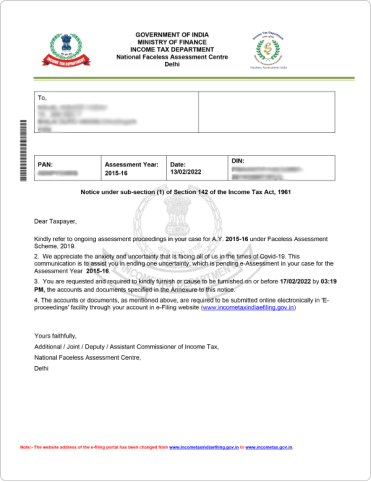
Return not filed within the due date of assessment period
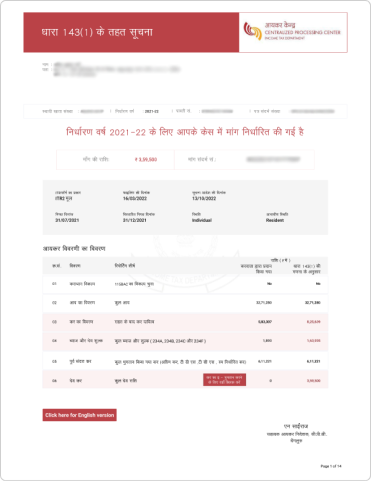
Return processed successfully. Error in the amount of deduction, loss claimed, etc.
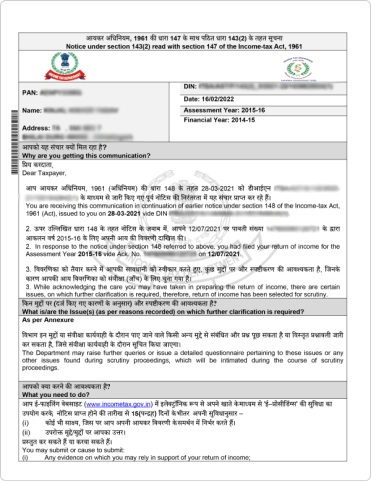
Notice to reconfirm that the tax return filed is accurate, and deduction has not been claimed in excess
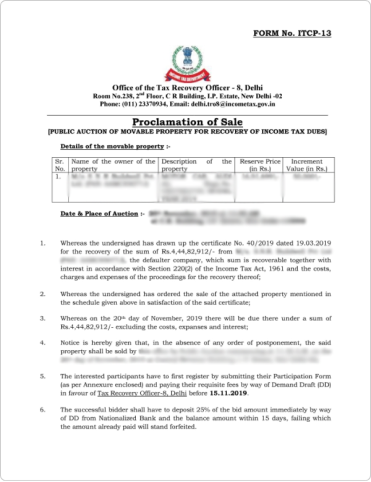
Detailed assessment notice to ensure all claims, deductions, etc., are filled correctly without any errors.
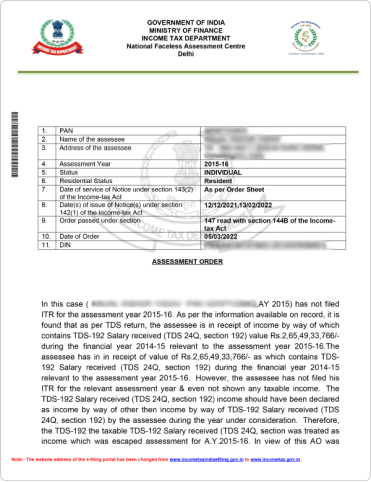
A notice sent if the assessing officer feels that any income has not been assessed
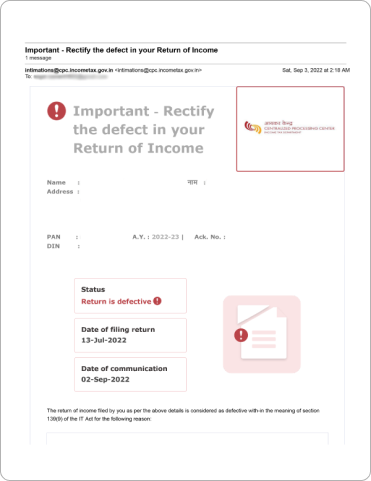
In case of inaccuracy in returns such as missing information, incorrect filling of return, etc.
The type of documents required for replying to an income tax notice depends on the type of notice received. Here are some basic documents that are common to every notice -
Before responding to a tax notice received, it is important to authenticate it. Here are the steps to authenticate income tax notice online on the income tax portal -
PAN, assessment year, document type, mobile number, and issue date.
Authenticate using DIN and mobile number.
Receiving an income tax notice may initially seem overwhelming, but with the right knowledge and approach, you can effectively manage it. Remember, timely and accurate responses are key. By checking and authenticating income tax notices online, you can verify their legitimacy and take the necessary steps to address any issues or discrepancies.
Once you have checked the income tax notice online, remember to respond within the time frame mentioned in the notice. Tax2win tax experts can help you respond to and resolve income tax notices timely and accurately. Talk to the experts today.